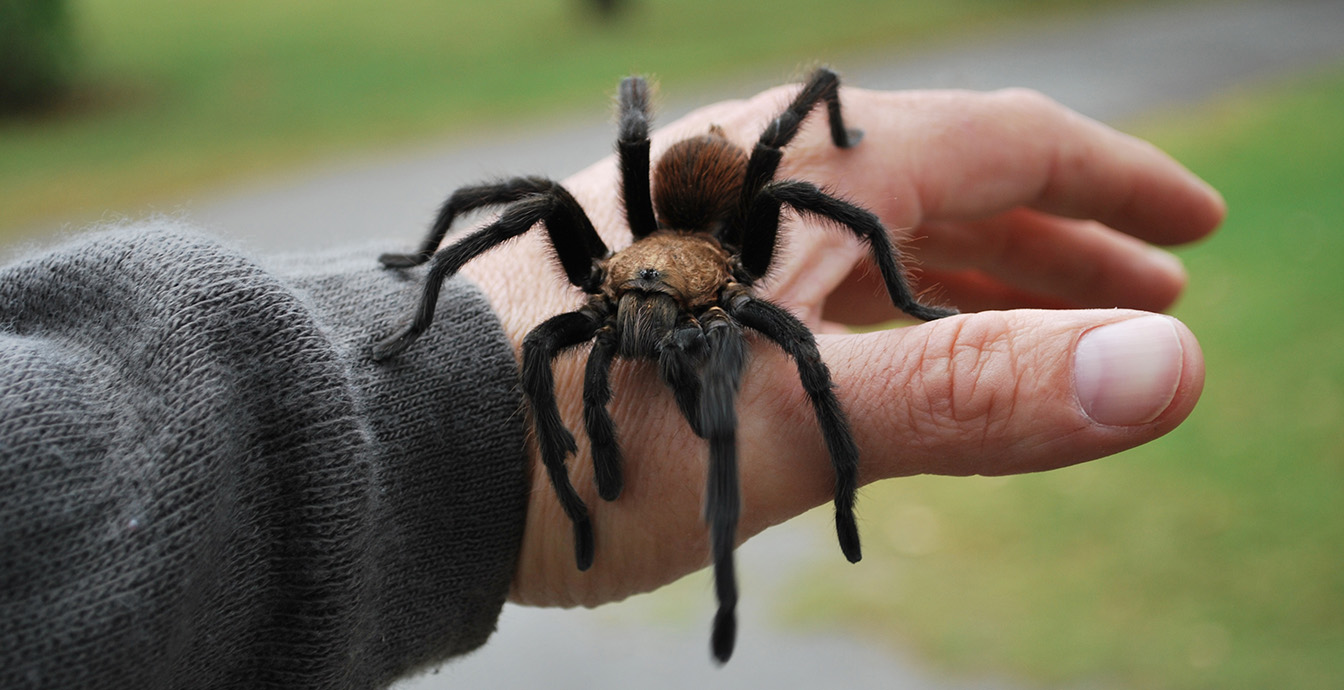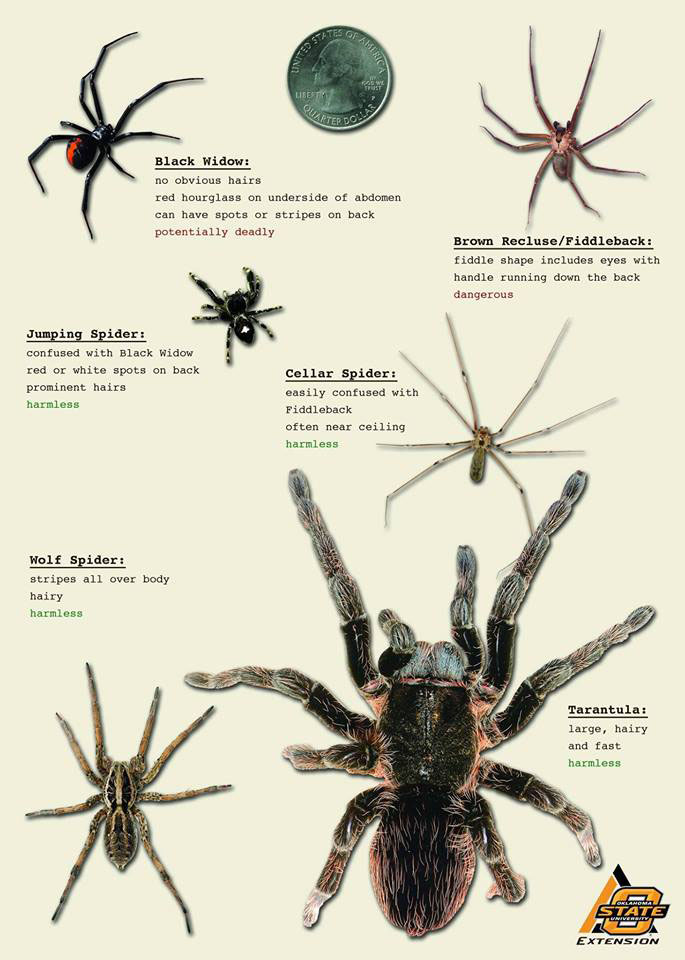
Spiders aren’t that scary
Wednesday, May 30, 2018
Arachnophobia is one of the most common fears of people all over the world. However, much of that fear may be unwarranted as only a dozen or so of the estimated 50,000 species of spider pose any real threat to humans.
Fear upon seeing a spider is a common feeling for many Oklahomans. While there are a couple problem-causing species, identifying nonthreatening and harmless spiders can help people and spiders coexist peacefully.
The tarantula, for example, while large, fast and very hairy, is harmless to people, said Andrine Shufran, Insect Adventure coordinator in Oklahoma State University’s Department of Entomology and Plant Pathology.
“While tarantulas have big fangs, their venom is not dangerous to people,” she said. “They won’t make you sick, they’re not going to kill you and they won’t make your arm rot off.”
Tarantulas are quite common in Oklahoma and surrounding states, sometimes even kept as pets due to their docile nature. These furry-legged spiders burrow underground, where they feast on insects, mice, lizards and small frogs.
Another common spider is the brown recluse, or fiddleback spider. They tend to avoid light and noise and can be found in dark places such as attics and basements feeding on dead insects.
While they rarely bite humans, fiddleback spiders deserve some respect as a threat because its bite can cause a very nasty sore. Their venom eats away at the skin and forms a painful black sore, but bites are very treatable and there have been no recorded deaths from bites in the United States for the last 100 years.
“However, only 25 percent of the people who get bitten actually get the sore,” said Shufran. “This is definitely a spider you want to stay away from. While almost every home has fiddlebacks in them, some people have never seen them before.”
Often confused with other spiders, partially because of the commonality of the term fiddleback, many people are unsure of the location of the fiddle shape. It is found on the back of the spider’s head, including its eyes, with the fiddle handle running down its back.

A commonly found spider easily misidentified as a fiddleback is the cellar spider, which has similar markings on its back and lives indoors. However, these spiders are typically found near the ceiling, while fiddlebacks are more commonly found near the ground.
“A cellar spider’s bite is not dangerous,” Shufran said. “They eat other spiders, so they are a good friend to have in your house.”
Another spider ally is the wolf spider, which also is often confused with the infamous fiddleback.
“The wolf spider lives outside and has stripes all over its body, while the fiddleback only has the fiddle marking on its head,” she said. “The bite of a wolf spider isn’t dangerous to anybody and this spider is actually great to have around your house because it will eat all sorts of other bugs and insects you don’t want to have.”
One of those bugs you do not want to have around is the dreaded black widow spider. Black widows have no hair on their bodies and their abdomens are round like a marble.
“They might have stripes or spots along their backs, but they’ll always have the red hourglass on their stomach,” Shufran said. “This animal is dangerous to people and you want to stay away from it.”
The venom from a black widow attacks the nervous system, but bites are very rare and quite treatable. It takes about two weeks for the venom to become life threatening if left untreated.
There is another common spider found in Oklahoma homes that gets confused with the black widow, but is a far inferior threat. The jumping spider is all black and can have red or white spots, but there are no markings on the stomach. These hairy spiders are quite numerous in our state, but pose no threat to people.
For more information on spiders commonly found in Oklahoma, contact your local county Extension office or visit insectadventure.okstate.edu.
MEDIA CONTACT: Brian Brus | Agricultural Communications Services | 405-744-6792 | BBrus@okstate.edu
